
Iconic wildlife to see in national parks
Want to know where to see wildlife in Canada? Parks Canada destinations are among the best places for wildlife watching. Along with this unique opportunity, comes the responsibility to treat animals with respect. We share this space with them.
Tips to respect wildlife and stay safe
- Ensure their survival and your safety - be discrete and respectful of their space
- You are too close if you distract an animal from its natural activity
- Use binoculars or a camera with a zoom lens to fully enjoy your experience while keeping your distance
Atlantic Canada
Moose

Spot the largest of North America’s antlered mammals.
Where to find
These kings of the forest can be spotted in national parks all over Canada, but are especially abundant in Gros Morne and Cape Breton Highlands National Parks in Newfoundland and Nova Scotia.
When to watch
Living around wetlands, lakes, and rivers, moose tend to be more active at dawn and dusk.
Fun fact
Moose can reach 2 metres in height and their large, flat antlers can grow to 1.5 m in width and weigh nearly 30 kg!
Turtles
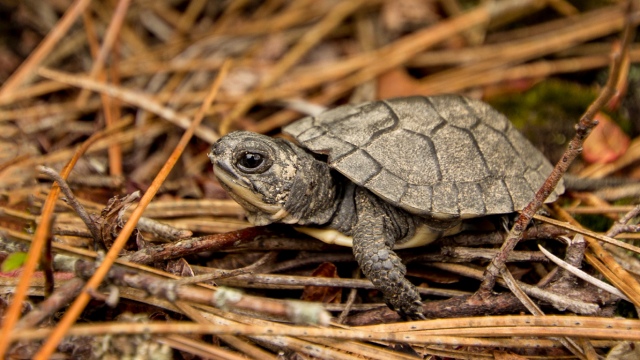
Let the many turtle crossing road signs greet you as you enter Kejimkujik National Park and National Historic Site in Nova Scotia, the richest area for turtles in all of Atlantic Canada.
Where to find
Keep an eye out in the shallow coves of Kejimkujik’s lakeshore and quiet river sections where an abundance of aquatic plants and insects reside for turtles to munch on.
Fun fact
Three types of aquatic turtles reside in Kejimkujik.
Grey seals
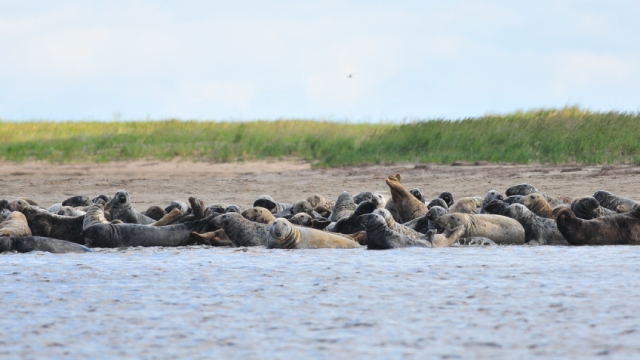
See if you can recognize the grey seal on your visit to Kouchibouguac National Park by its long snout, black coat with grey spots for males, silver grey coat and and black spots for females and young pups.
Where to find
These chunky semi aquatic mammals feast on a variety of fish along the banks of the St Lawrence and throughout Atlantic Canada.
Fun fact
They can measure up to 3 metres in length and weigh up to 450 kg.
Quebec
Common loons
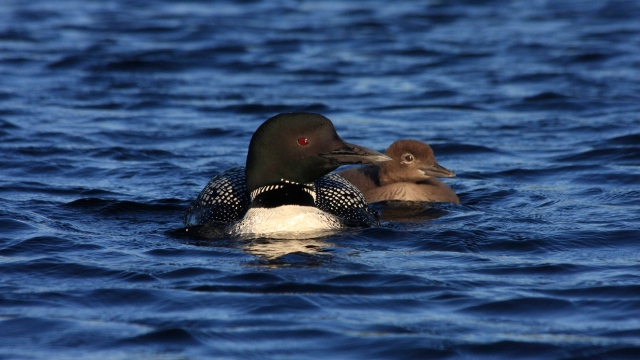
Spot the emblem of our one dollar coin or “loonie” in real life! At night, listen for their quiet haunting call as you sit around a crackling fire at your campsite.
Where to find
Although loons are found all over Canada, they are well-known at Lake Wapizagonke in La Mauricie National Park in Quebec.
When to watch
Visit in July and August when the eggs have hatched and admire young loons exploring waters with their family.
Fun fact
There is usually only one couple per lake.
Beavers
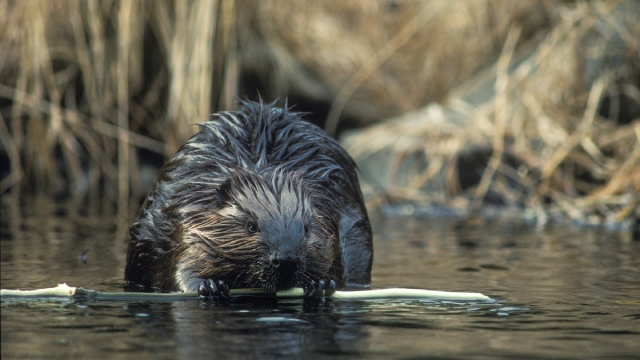
Well-known for building dams, canals, and lodges, these wide-tailed toothy rodents can be seen hard at work in streams and ponds all over Canada.
Where to find
Head out on a hike in La Mauricie National Park and catch glimpses of gnawed trunks from fallen trees, huts made of branches, dams and chewed branches floating in the water.
When to watch
The best time to see these Canadian symbols performing their engineering marvels is at dawn or dusk.
Fun fact
At La Mauricie, these resourceful rodents are monitored every 10 years to assess population density. As of the most recent account, there are around 155 colonies in the park.
Whales
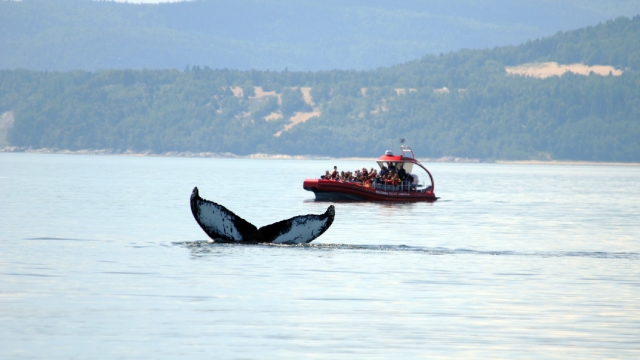
Visit one of the best places in the world to whale watch: Saguenay–St. Lawrence Marine Park.
Where to find
Head to the rocks at Cap de Bon-Désir, and see if you can observe all 13 species of whales.
When to watch
The best time for whale watching is from July to mid-October.
Fun fact
The St. Lawrence Beluga is an endangered species, the Blue whale is the largest mammal on the planet, and the Humpback whale travels thousands of kilometres every year to give birth in the Caribbean Sea.
Black bears
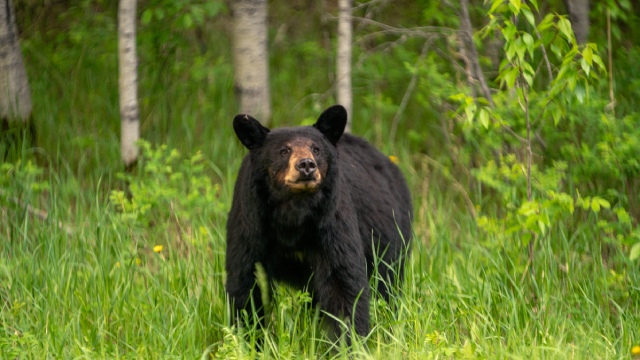
Stay alert and make sure to observe from a safe distance. In order to enjoy your visit safely, know how to react during an encounter with a bear.
Where to find
While these magnificent creatures can be found in almost every province and territory in Canada, keep your eyes peeled in Forillon National Park
Fun fact
Unlike their name, black bears can also be light reddish brown and have multi-coloured streaks and patches? Known for their long faces and large ears, black bears have an excellent sense of smell and are very smart.
Atlantic puffins

The Atlantic puffin steals the show in Mingan Archipelago National Park Reserve with its clown-like head and bright multi-coloured beak, earning them the adorable “sea parrot” nickname.
Where to find
Observe two large colonies on Île de la Maison and Île à Calculot des Betchouanes, and a small colony on Île aux Perroquets.
When to watch
Admire these adorable birds in the archipelago from mid-april to early September.
Fun fact
You can observe over 35,000 seabird couples of 12 different species during breeding season.
Ontario
Monarch butterflies
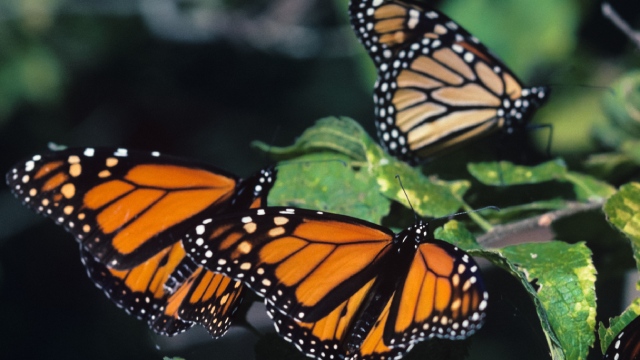
Visit Point Pelee National Park and see a spectacular gathering of monarchs.
Where to find
Head to ‘The Tip’ just before sunset or early morning and scan the trees for monarchs. Remember, when their wings are closed, they resemble dead leaves, so make sure to bring a pair of binoculars!
When to watch
Each fall, from the end of August to mid-October they regroup before heading off on their 3000 km journey to the mountainous forests of Mexico.
Fun fact
They tend to move on cold fronts, and monarch numbers only increase when weather conditions like rain, wind or temperatures prevent them from crossing Lake Erie.
Massasauga rattlesnakes
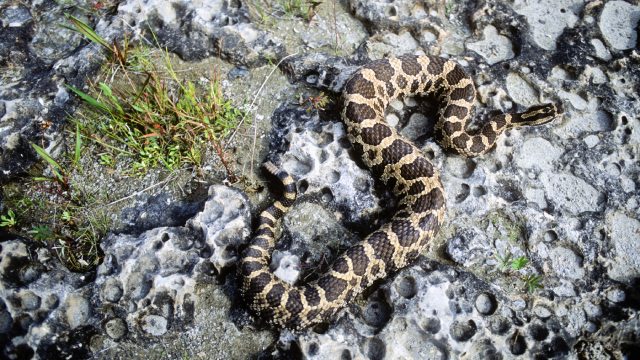
Observe Ontario’s only venomous snake, the Massasauga rattlesnake, in Bruce Peninsula and Georgian Bay Islands National Parks from early spring until late fall. Up to a metre in length, with a thick body and a diamond shaped head, these snakes are solitary, passive and timid. They prefer to hide or retreat from danger rather than attack.
Where to find
You are most likely to encounter rattlesnakes sunning themselves on rocks along the trail or in the campground.
When to watch
From early spring to late fall.
Fun fact
Its “rattle” gains a new ring every year. When threatened, it will shake its tail in warning and only strike as a last resort if it cannot escape. Be respectful and observe from a distance.
Turtles
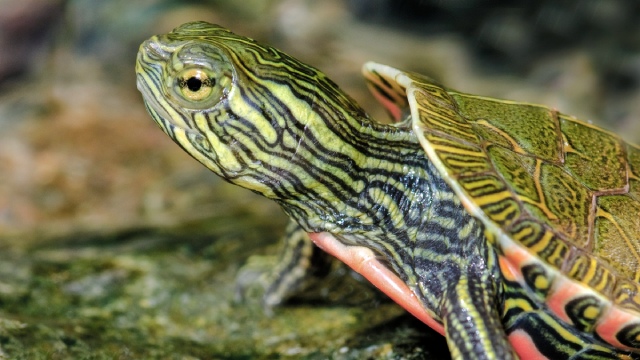
Southern Ontario is the best destination to see turtles in Canada.
Where to find
Keep an eye out for them in a variety of habitats such as lakes, ponds, rivers, marshes, and bogs in Rouge National Urban Park, Bruce Peninsula, Thousand Islands and Point Pelee National Parks and even Trent—Severn Waterway National Historic Site.
When to watch
When it’s sunny! Turtles are excellent swimmers and love to bask in the sun on rocks and logs.
Fun fact
Eight native species are found in a variety of habitats in Ontario.
American white pelicans

Watch the grandiose American white pelican along the north shore of Lake Superior National Marine Conservation Area.
Where to find
Explore Nipigon Bay, Black Bay and Hurkett Cove.
When to watch
Visit in May and June for greater chances of seeing this large bird measuring between 1.25 and 1.65 m in length with a wingspan of up to 3 m.
Fun fact
Unlike other pelicans that plunge-dive to catch fish, this pelican simply floats along the water and scoops up fish with its distinctive long orange beak.
White-tailed deer
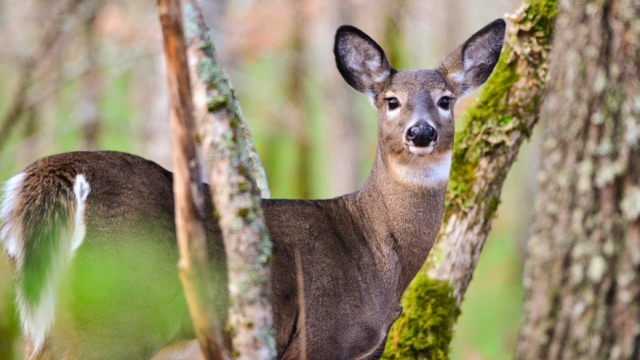
Admire the beautiful white-tailed deer in Rouge National Urban Park.
Where to find
All over the park! But in the winter, deer often take shelter in the dense cedar forests of the park.
When to watch
Best spotted at dawn or dusk.
Fun fact
You can easily recognize the white-tailed deer when it is running with its small tail raised.
Saskatchewan and Manitoba
Bison
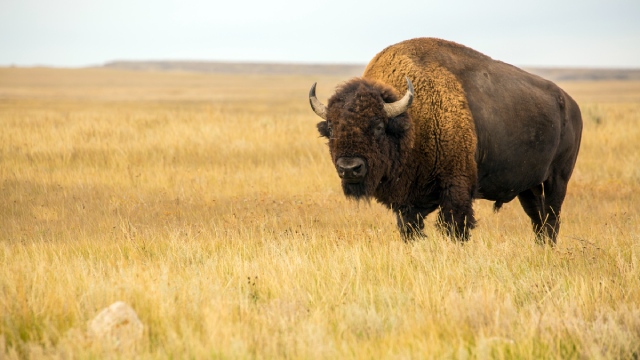
Once hunted to near-extinction, bison are once again roaming the prairies!
Where to find
- To see one of Canada’s few remaining populations of free ranging plains bison, head to the west side of Prince Albert National Park and try to spot the Sturgeon River plains bison
- Visit Grasslands National Park and embark on the Ecotour Scenic Drive, a 20 km self-guided driving tour through magnificent prairie landscape in the West Block
- For a sight of enclosed bison, visit the Lake Audy Bison Enclosure in Riding Mountain National Park, where a herd of approximately 40 plains bison reside
- Be on the lookout for bison at Elk Island National Park (Alberta), one of the only places in Canada where you might get stuck in a bison traffic jam
Fun fact
For over one hundred years, Canadian national parks have worked to maintain and restore bison herds for conservation.
Burrowing owls
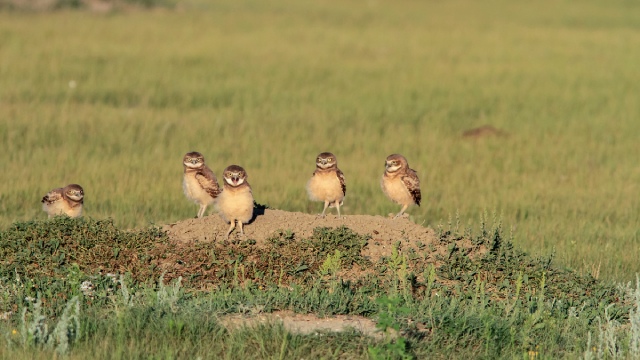
You may be intrigued by this peculiar little owl in Grasslands National Park. Although remarkably adapted to the prairies, it is an endangered species in Canada.
Where to find
Walk the Top Dogtown Trail in the park’s West Block and look out for burrowing owls that may have reclaimed an abandoned prairie dog’s burrow for a home.
When to watch
Spot these fluffy birds in September as they prepare to migrate.
Fun fact
It nests underground in burrows abandoned by prairie dogs, foxes, coyotes and badgers.
Black-tailed prairie dogs

Watch black-tailed prairie dogs scurry around in Grasslands National Park.
Where to find
Head out on the Ecotour Scenic Drive in the park’s West Block, a 20 km self-guided driving tour and sneak a peek at prairie dog colonies through the telescopes at Stop 2 and Stop 7.
Fun fact
These comical animals spend the first two hours after sunrise foraging and eating, and the rest of the day grooming, dustbathing, stretching, socializing and repairing their burrows.
Polar bears
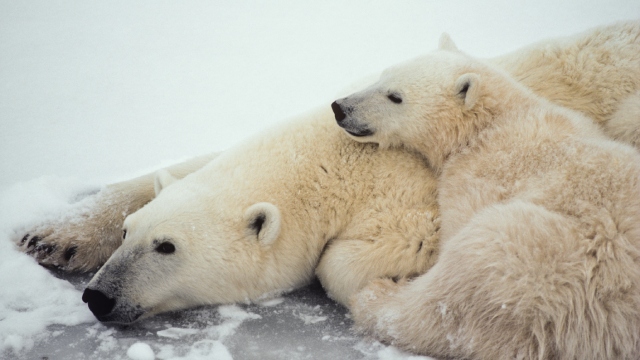
Visit Wapusk National Park, one of the largest known polar bear maternity denning areas in the world.
Where to find
Visit Wapusk with commercial outfitters, you’ll even have the chance to board a tundra vehicle for bear viewing.
When to watch
Polar bears congregate near Churchill during October and early November, and can be seen as early as June in coastal areas when there is no sea ice present.
Fun fact
Known as the largest land carnivore in North America, polar bears are strong, fast, agile, on land or ice, and are expert swimmers and divers.
Beluga whales
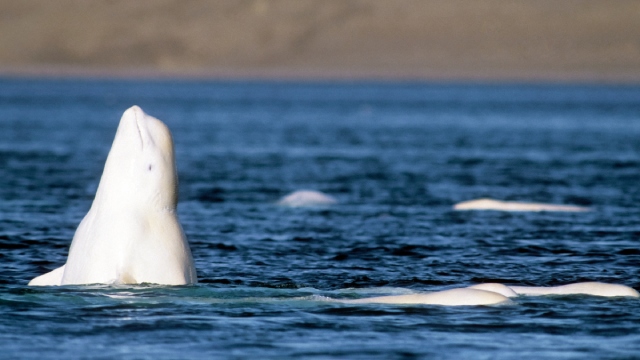
Nicknamed “sea canaries” for their high-pitched underwater vocalizations, almost 3,000 beluga whales inhabit the warmer waters of the Churchill River after the ice breaks up.
Where to find
Visit Prince of Wales Fort National Historic Site and Cape Merry at Churchill: both located on the shore of the summer refuge of a large number of belugas.
When to watch
July and August are the best times to spot these fascinating creatures.
Fun fact
One-third of the world’s beluga population migrates near Churchill in western Hudson Bay every summer.
British Columbia and Alberta
Elk (wapiti)
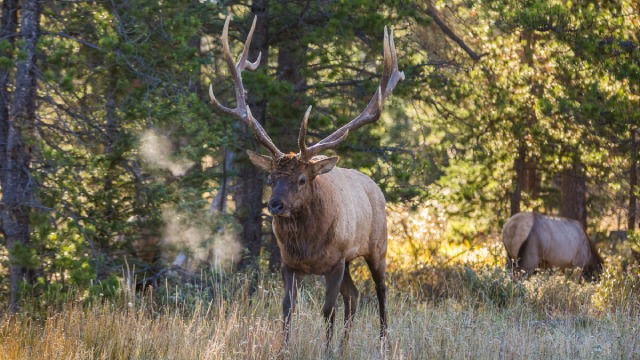
Listen to the song of a very vocal member of the deer family. Older elk bark to warn others of danger and young elk keep in contact with their mothers with squeals, chirps and mews.
Where to watch
- Visit Elk Island National Park, established in 1906 to protect a small band of remaining elk, and now supporting over 1000 elk
- Explore Prince Albert National Park (Saskatchewan) where it is very common to see elk, even in the town of Waskesiu Lake
When to watch
Best heard in Fall, but seen year round!
Fun fact
Elk Island has provided many elk for reintroductions and has also served as a research area for study of the species.
Mountain goats

With their white coat, beard and small dagger-shaped black horns, mountain goats have an amazing ability to climb steep rocks, snow and ice in the mountains.
Where to find
Observe these furry animals in alpine and subalpine areas of Jasper, Banff, Yoho, Kootenay as well as other mountain national parks and Canada’s north. Head to Mount Kerkeslin “Goat Lick” viewpoint on the Icefields Parkway and at Disaster Point on Highway 16 east of Jasper for stunning views and a high chance of observing mountain goats!
When to watch
Mountain goats are seen all year long, but are easier to spot in the summer when their coats contrast with the mountains.
Bighorn sheep
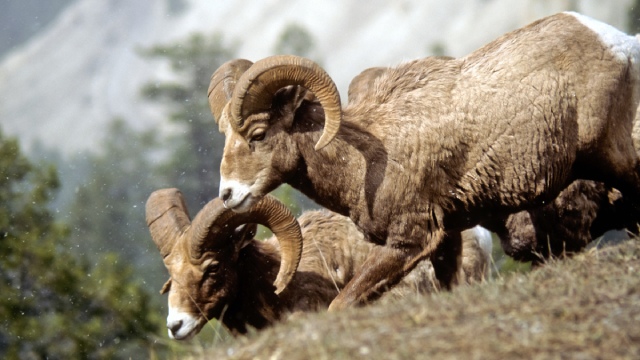
Unmistakable with their massive curved horns, bighorn sheep are also known for their sandy coloured coat and white rump.
Where to find
You can find bighorn sheep all year long among the steep rocky slopes of Jasper, Banff, Yoho, Kootenay and Waterton Lakes National Parks.
When to watch
Mainly grazers, bighorn sheep migrate seasonally between grassy slopes in the lower elevations and higher alpine meadows.
Fun fact
They stay close to steep, rocky “escape terrain” that they use to flee from predators and often live in groups of 10 to 20.
Grizzly bears
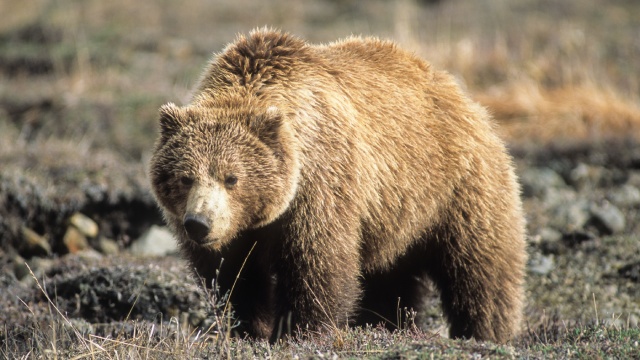
Make sure to observe from a safe distance. Knowing how to react during an encounter with a bear is the best way to enjoy the parks safely.
Where to find
You can often spot grizzlies and black bears in:
- Waterton Lakes National Park on the drive out to Red Rock Canyon
- Jasper National Park on the drive out to Maligne Lake
- Banff National Park along the Bow Valley Parkway and on the outskirts of town
- other mountain national parks and Canada’s north
Fun fact
Known for their large muscular shoulder hump, grizzly bears can weigh up to 320 kg. That’s about 750 pounds!
Killer whales (Orca)
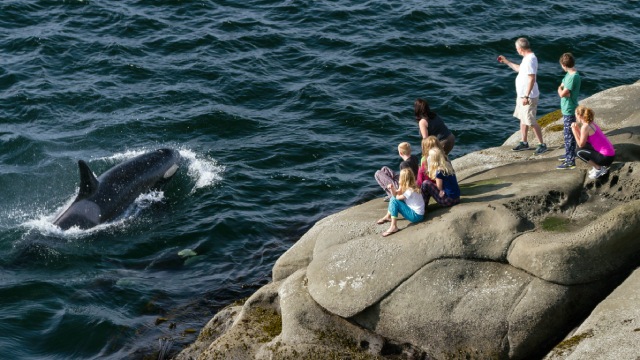
The killer whale is the largest member of the dolphin family. Southern Resident Killer Whales can be found around Gulf Islands National Park Reserve and Pacific Rim National Park Reserve.
Where to find
Be sure to visit Saturna Island and spot orcas, seals, sea lions and even porpoises right from shore! Orca’s are best admired from the shore as boat disturbances and noise interfere with their ability to find prey and communicate with each other.
Fun fact
These killer whales live in close-knit communities known as pods, made up of females and their offspring.
Northern Canada
Narwhals
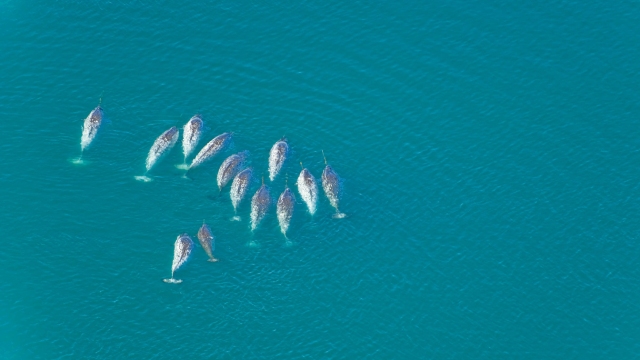
Nicknamed the “unicorn of the sea” and long shrouded in mystery, the narwhal is famous for its long ivory tusk, which spirals counterclockwise and can reach up to 2.5 meters.
Where to find
- Treat yourself to a wildlife viewing excursion with one of the local boat operators and guides that provide transportation to Sirmilik National Park and the surroundings
- Don’t miss the opportunity to discover Lancaster Sound (Tallurutiup Imanga National Marine Conservation Area) and Eclipse Sound (Tasiuja)
- Observe whales from land near Victor Bay or Arctic Bay in the summer or have an outfitter take you to the floe edge from Arctic Bay in the spring to observe majestic narwhals
Fun fact
Over the summer months, the Canadian Arctic is home to about 90 per cent of the world’s narwhal population.
Muskoxen
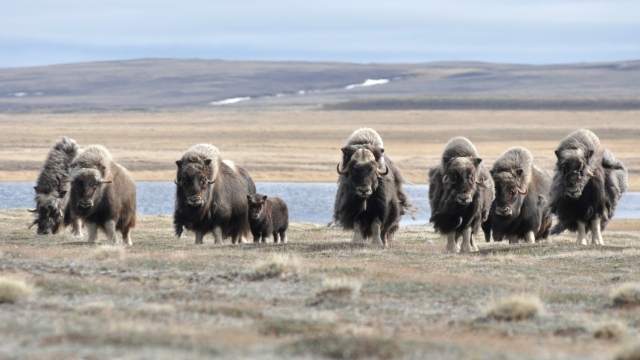
Muskoxen are large, shaggy beasts that roam the Arctic tundra feeding on roots, mosses, and lichens. Both male and female muskoxen have impressive horns, although the females are less massive.
Where to find
You can see the muskox in the Canadian tundra in Aulavik and Quttinirpaaq National Parks and many other northern parks.
Fun fact
Their undercoat, called qiviut, is eight times warmer than sheep’s wool and finer than cashmere!
Whooping cranes
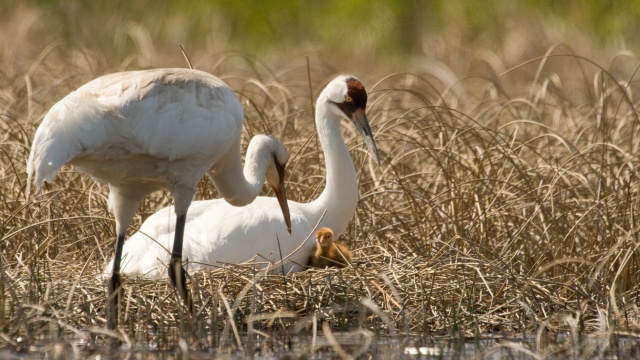
At 1.5 metres tall, they are North America’s tallest bird!
Where to find
Each spring, the endangered whooping crane travels from the Aransas National Wildlife Refuge in Texas to nest in Wood Buffalo National Park.
When to watch
Although seeing whooping cranes is rare due to them nesting in remote areas, they can occasionally be seen in June, July and August.
Fun fact
Thanks to international conservation efforts, this wild flock has grown from 15 whooping cranes to more than 300.
Caribou
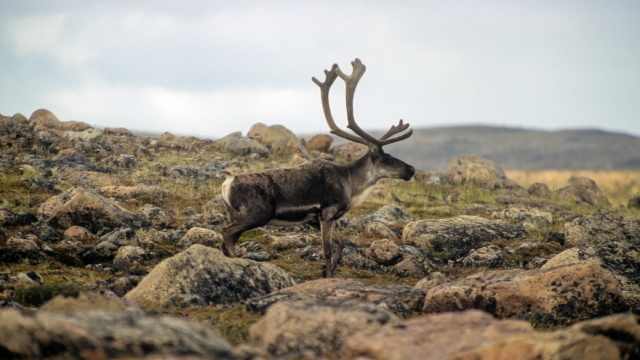
For thousands of years lndigenous people have had a strong connection to caribou, often altering their hunting patterns to follow the migration. Each caribou herd travels within a specific geographic area.
Where to find
Each year, the more than 190,000-strong Porcupine caribou herd migrates through Ivvavik National Park, which protects a portion of their calving grounds.
Fun fact
Ivvavik means ‘a place for giving birth, a nursery,’ in Inuvialuktun.
Dall’s sheep
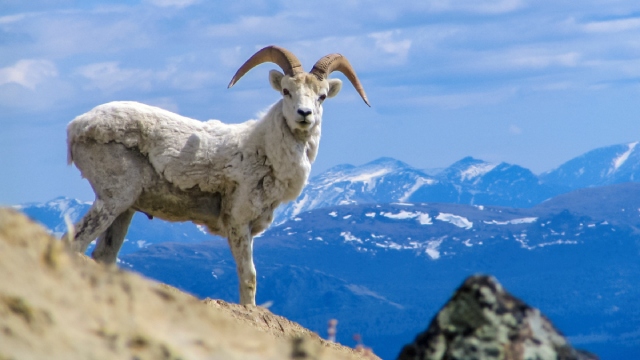
Dall’s Sheep have all white fur with tan-coloured horns. While males have thick horns that grow larger and spiral with age, female horns remain small and slender.
Where to find
Keep your eyes peeled and you might get lucky and catch a glimpse of some Dall’s sheep near the Thechàl Dhâl Visitor Centre in Kluane National Park and Reserve.
When to watch
Dall’s sheep spend the summer grazing in alpine meadows atop the peaks. In the fall they move to their winter range a few kilometres away where the wind keeps the snow shallow and the sun warms south facing slopes.
Fun fact
They use the same migration routes for generations and return to the same cliffs to give birth to their lambs every year.
- Date modified :